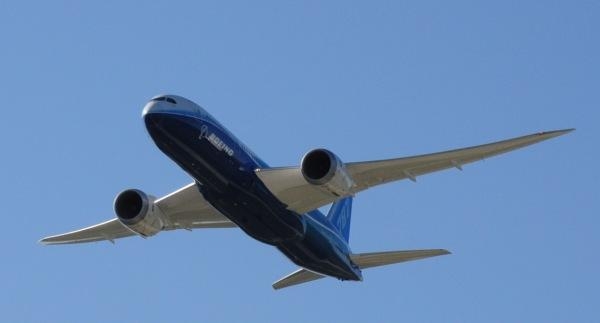Tue, Aug 16, 2011
Nearly 900 New Airplanes Will Be Needed Over The Next 20
Years
In its newly-released "2011 CIS Market Outlook", Boeing
forecasts that air carriers in Russia and CIS will take delivery of
1,080 new airplanes over the next 20 years at an investment of $110
billion. New airplane deliveries in the region will be driven
largely by the need to retire older, less fuel-efficient
single-aisle airplanes and regional jets, as airlines replace them
with new-generation, more fuel-efficient models.

"Demand for airplanes also will be fueled by an increase in the
number of people flying to, from and within Russia and CIS,”
said Randy Tinseth, vice president of Marketing, Boeing Commercial
Airplanes, who released Boeing's 2011 CIS market outlook Monday in
Moscow. “We expect passenger traffic for the region to grow
at a rate of 4.3 percent on average."
Tinseth said the growing tendency of both business and personal
travelers to traverse Russia and CIS will create strong demand for
rapid, frequent and reliable coast-to-coast and interregional
transportation. Driven by this demand, more than 60 percent of the
new deliveries over the next 20 years will be single-aisle
airplanes. Taking retirements of old airplanes into account, the
CIS fleet will grow from 1,140 airplanes today to about 1,400
airplanes by 2030.
Boeing forecasts that single-aisle airplanes will grow from 55
percent of the total CIS fleet today to 66 percent of the fleet by
2030. Airlines are increasingly focusing on airplane age as
fuel-thirsty, older airplanes weigh increasingly on earnings.
Increased attention to aviation's impact on global climate change
also will be a factor in selecting airplanes that produce lower
carbon emissions.

Twin-aisle fleets will evolve in the
region as airlines continue to expand international point-to-point
services to a wider range of airport pairs and frequencies. Small-
and mid-sized twin-aisle airplanes will represent 18 percent of the
CIS fleet by 2030. Within the CIS market, Boeing sees a demand for
200 new, efficient twin-aisle airplanes such as the 787
Dreamliner.Large airplanes (747-size and larger) will not see
significant demand in CIS, accounting for only four percent of all
deliveries over the next 20 years. Approximately 40 large airplanes
are projected for CIS through 2030.
Boeing also forecasts demand for 160 regional jets in the CIS.
These aircraft will be used to accommodate traffic growth to
smaller secondary markets within the region and to replace older
aircraft.
More News
Its Offerings Are Lighter, Cleaner, and Now Pushing Past 1,000nm on SAF Jet Fuel DeltaHawk’s diesel-powered aircraft lineup has seen incredible upgrades over the last few yea>[...]
The Airplane Experienced A Total Loss Of Engine Power On December 3, 2025, about 1600 central standard time, a Mooney Aircraft Corp. M20K, N57229, was substantially damaged when it>[...]
Make Sure You NEVER Miss A New Story From Aero-News Network Do you ever feel like you never see posts from a certain person or page on Facebook or Instagram? Here’s how you c>[...]
Aero Linx: European Society of Aerospace Medicine (ESAM) As a pan-European, independent forum, it works to promote the safety and health of all persons involved in aviation and spa>[...]
“We are excited to see Wisk achieve this milestone, and I’m so proud of the team that made it possible. The team at Wisk has built advanced technologies across flight c>[...]
 Aero-TV: DeltaHawks Diesel Power Steps Into the Spotlight
Aero-TV: DeltaHawks Diesel Power Steps Into the Spotlight NTSB Prelim: Mooney Aircraft Corp. M20K
NTSB Prelim: Mooney Aircraft Corp. M20K ANN FAQ: Turn On Post Notifications
ANN FAQ: Turn On Post Notifications ANN's Daily Aero-Linx (12.20.25)
ANN's Daily Aero-Linx (12.20.25) Aero-News: Quote of the Day (12.20.25)
Aero-News: Quote of the Day (12.20.25)




